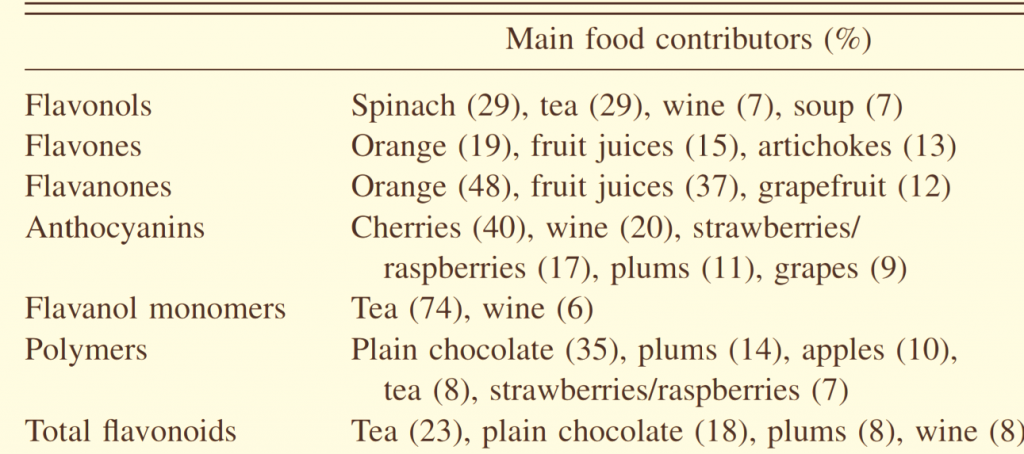 Flavonoids are polyphenolic antioxidants that are bioavailable in humans. The main flavonoid subgroups are flavonols, flavanones, flavones, flavan-3-ols, proanthocyanidins, anthocyanins and isoflavones. These different subgroups may have different biological activities, and are present in a broad range of foods in differing amounts. Therefore the diet consumed by the individual can have a strong influence on the amount of flavonoids in the diet. Evidence suggests that those with the highest total flavonoid intake may be protected from a number of Western lifestyle diseases including cancer and cardiovascular disease. This protection may relate to the antioxidant effects of flavonoid, as both cancer and cardiovascular disease have aetiologies that may be linked to the generation of free radicals. For example, high blood pressure can be caused by the generation of free radicals inhibiting nitric oxide in blood vessels, which disrupts the normal flow dynamics of arteries by preventing adequate relaxation.
Flavonoids are polyphenolic antioxidants that are bioavailable in humans. The main flavonoid subgroups are flavonols, flavanones, flavones, flavan-3-ols, proanthocyanidins, anthocyanins and isoflavones. These different subgroups may have different biological activities, and are present in a broad range of foods in differing amounts. Therefore the diet consumed by the individual can have a strong influence on the amount of flavonoids in the diet. Evidence suggests that those with the highest total flavonoid intake may be protected from a number of Western lifestyle diseases including cancer and cardiovascular disease. This protection may relate to the antioxidant effects of flavonoid, as both cancer and cardiovascular disease have aetiologies that may be linked to the generation of free radicals. For example, high blood pressure can be caused by the generation of free radicals inhibiting nitric oxide in blood vessels, which disrupts the normal flow dynamics of arteries by preventing adequate relaxation.

The main subclasses of flavonoids are flavonols, flavones, flavanones, anthocyanins, flavan-3-ols (also called catechins), proanthocyanidins (flavan-3-ol polymers) and isoflavones (although not a true flavonoid). Flavonoids are distributed in a wide range of foods and the exact contribution of each subclass to the diet, will depend on the food eaten by the individual. As flavonoids are secondary plant metabolites, they tend to be found in plant foods. Tea, red wine fruit, vegetables, chocolate and cocoa are foods that have been shown to contain high amount of flavonoids. However nearly all plant foods contain some flavonoids. Eating a wide range of different plants is therefore important if a wide range of flavonoids are to be consumed. This may confer the best health effects. Some of the main food source of various flavonoids are shown above. For citations please see reference at bottom of page.
Flavonoids may therefore have benefits at preventing the generation of high blood pressure. A number of studies have shown for example that anthocyanins are able to improve flow mediated dilation in arteries, suggesting that they can facilitate the relaxation of blood vessels. Epidemiological studies have investigated the association between flavonoid intake and blood pressure and shown protective effects. For example, in one large scale study involving over 40,000 individuals, researchers showed that in French middle-aged women, those subjects with higher intakes of flavonols, anthocyanins, and polymeric flavonoid intakes, as well as those with higher total flavonoid intakes, were less likely to develop hypertension. Therefore evidence suggests that a range of flavonoid may have beneficial effects with regard hypertension. Of course an association does not prove a cause and effect and so the flavonoids may simply be a marker for a healthy diet, which may explain the cardioprotective effects.
Eat Well, Stay Healthy, Protect Yourself
RdB
